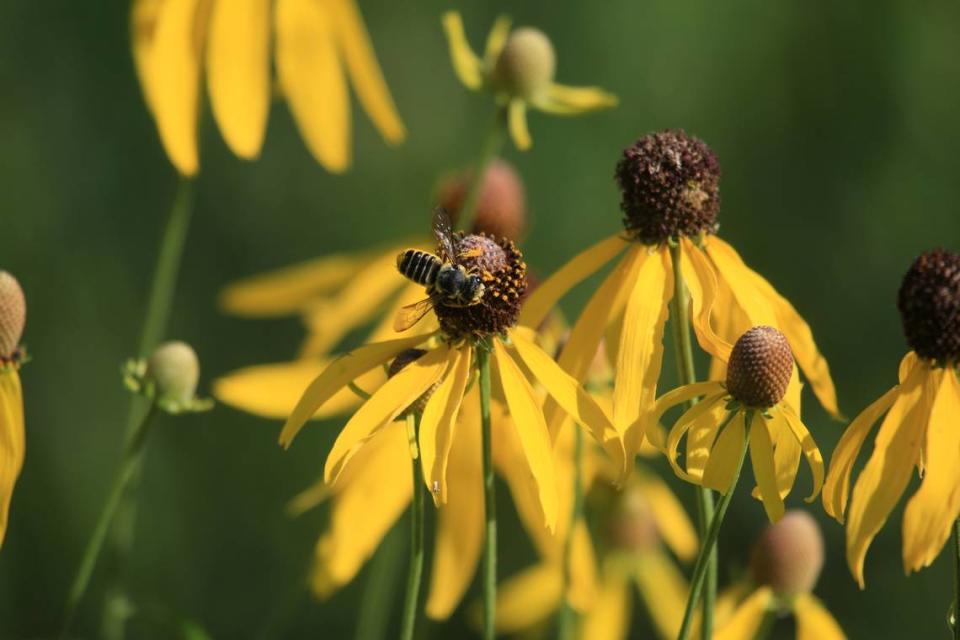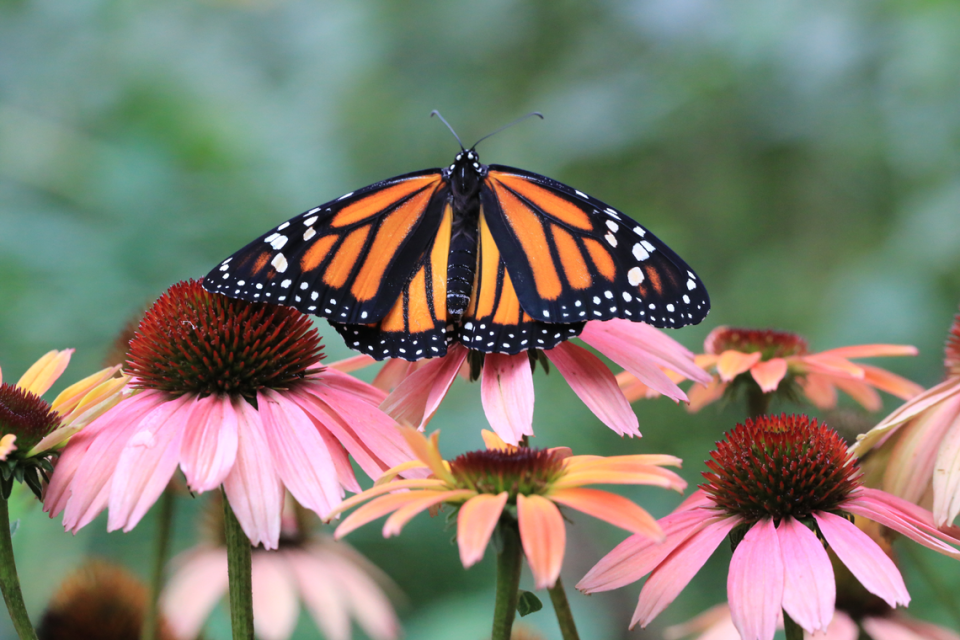What’s the difference between natives and nativars? Bees know, and now you can, too
Gardeners can agree that we plant and tend perennial gardens to provide beauty and joy. A growing number of us also garden to support a wide range of insects for a healthy environment. These native insects and bees are vital pollinators and part of the food chain. Where we can differ is in deciding which plants to plant.
When selecting plants to nurture both our soul and pollinators, we have choices of which plants to grow and their breeding. Do we select true natives or cultivars often referred to as nativars? Remember, all plants are considered native somewhere.
A cultivar is a native plant that has been bred for specific characteristics. Some examples would be unique flower or leaf colors, double flowers or a more compact growth habit. Many of the plants found at garden centers are cultivars, although true natives are becoming more widely available.
How can you tell the difference? Nativars usually have a cultivar name. A good example is the coneflower. Echinacea purpurea is a native plant, but breeders have developed new colors, unique petal shapes, and reduced height. A cultivar or nativar will have a name like “Magnus” or “Pow Wow.” A pure native will not.
Which is best for your garden? This is where we can differ in our choices. Is a native better than a nativar? For some, the decision is simple, while others struggle with the choices. The truth is it depends on many factors.
True natives are the preferred choice of most insects. They have evolved together and have a relationship. Insects are attracted to natives for various reasons: flower shape, color, nectar access and many other factors.
Cultivars may also provide many of these benefits and become a favorite of the beneficial insect. Research has pointed to many factors in a plant’s success as a food source.

The more the plant has been manipulated, the less likely it will be as useful to insects. For example, many native flowers are simple. They have lower petal counts with open centers that provide easy access for insects to the energy-rich nectar. Many nativars are bred for showier, double flowers to increase the petal count. These petal-rich blooms often block access to the sugary nectar. Limit the access, and the plant is no longer beneficial for the insects.
Another example is leaf color. Many cultivars are bred for various colors. The native may have a green leaf, while the nativar has a red hue. This color variation can confuse the insect, result in decreased feeding, or the plant has different compounds which cannot be digested.
Conversely, researchers have found that some nativars have richer or higher nectar content than their native cousins and are preferred by the native insects.

If your goal is to provide a habitat for native insects and bees, true natives should be the garden’s backbone. Adding nativars to increase your joy can be part of your planting plan. Watch your plants and see what the insects prefer, as they are real indicators of what to grow.
The take-home message is that diversity is always the best approach when it comes to plant selection.
Dennis Patton is a horticulture agent with Kansas State University Research and Extension. Need help? Contact the Johnson County Extension gardening hotline at 913-715-7050 or email garden.help@jocogov.org. The Kansas Garden Guide, your one-stop vegetable resource, has just been updated. Find your copy by going to ksre.k-state.edu and searching Kansas Garden Guide.

